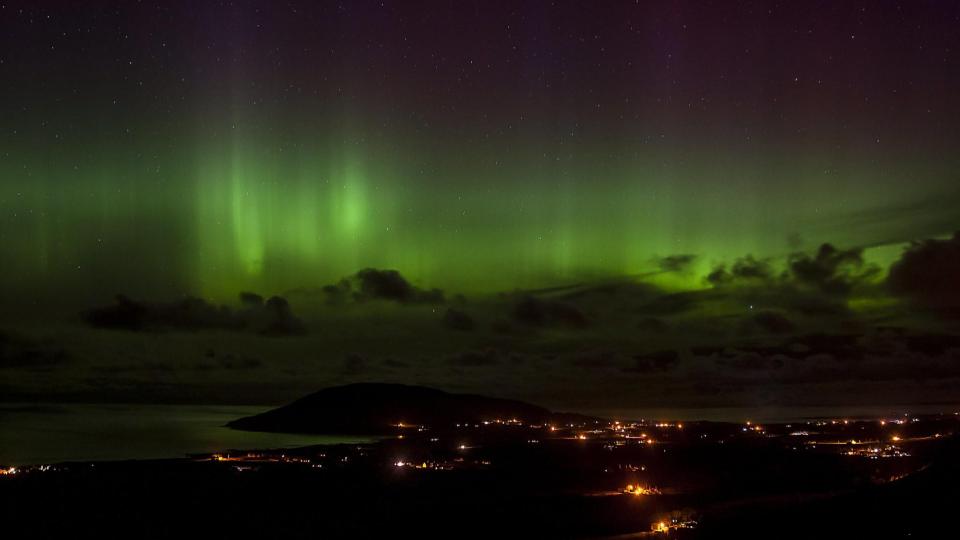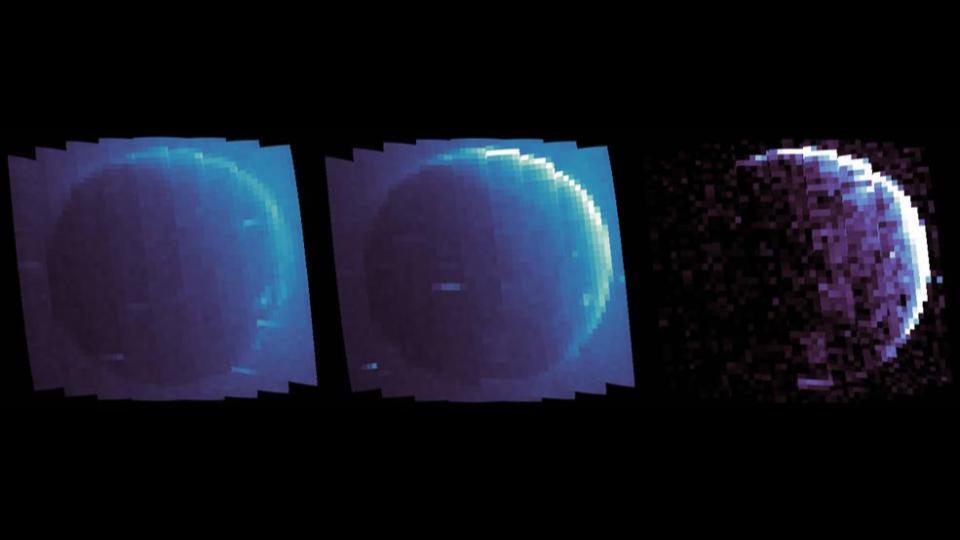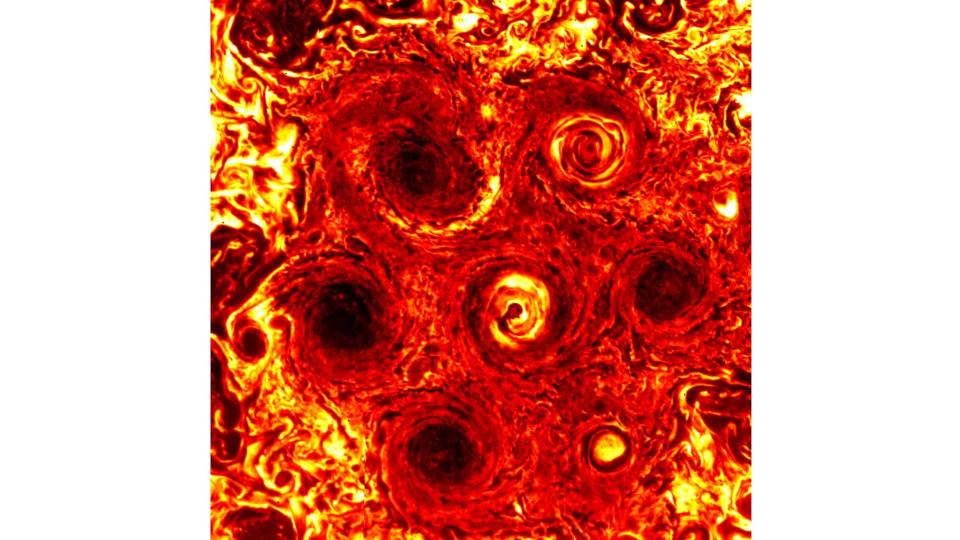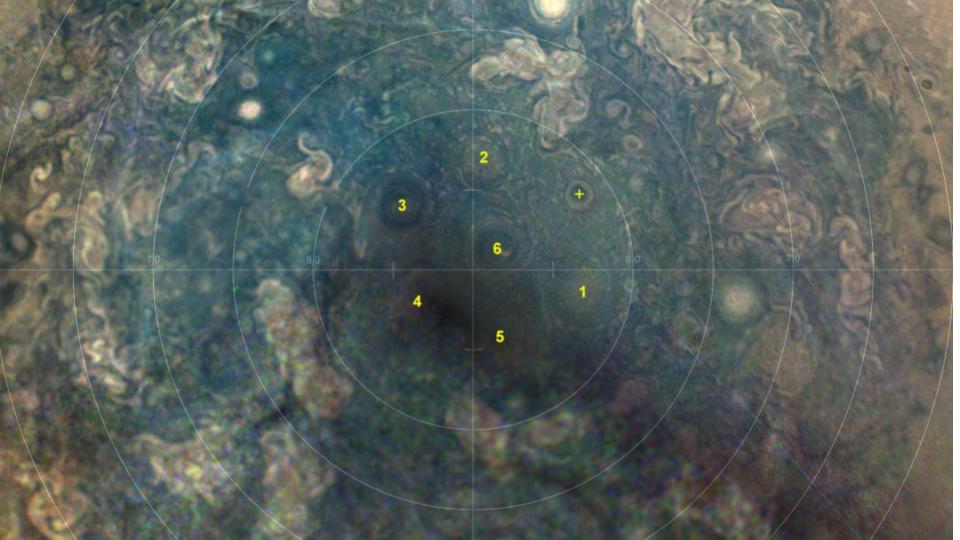It has long been a joke in Astronomy that if you wanted to really mess with someone, you should ask “how do magnetic fields and dust effect that?” These two factors, which permeate most of space in various amounts, are extraordinarily hard to understand, but affect everything. To make life easier, we often assume their effects are negligible, and hope we are right as we move on with calculations that ignore their tedious equations, and complicating effects.
But sometimes, a researcher or research team will actively seek to understand how these two things actually play a role in the evolution of this universe we all share. Today’s first two stories come from science teams who took this extra step.
In today’s first story, we look at the spiral structure of our galaxy and so many others. It has long been believed that this shape is generated by the tendency of material to linger in high density regions. Put simply, as a star or cloud orbits a galaxy, it’s motion is mostly determined by the amount of mass it is orbiting, and by how elliptical or circular the resulting orbit may be. These two factors, the mass inside the orbit and the ellipticity of the orbit can allow you to figure out how a system will move over time… more or less.

In crowded large galaxies like our own, you have to ask, is that star is going to end up interacting with other materials in our galaxy that are going to affect its motion? In the case of spiral galaxies like our own, slight place to place differences in density have overtime built up into massive spiral structures. As stars approach these higher density regions They get pulled forward in their orbit, and pulled out of the lower density regions between the arms. As they start to orbit out, they get slowed, linger in the arm for longer than they would otherwise. While in the arm, gas and dust can get compressed and shocked, triggering epochs of star formation, causing arms to shine bright in the light of hot young stars that will die before they escape the region of the arm.

And this brings us to magnetic fields and dust. In new research published in the Astrophysical Journal by a team led by Dr. Enrique Lopez-Rodriguez uses the SOFIA airborne observatory to observe how dust in M77’s galactic spiral arms is aligned along magnetic field lines that appear to stretch along spiral arms, with the magnetic field aligned along the outward stretching arms. According to the press release, “This implies that the gravitational forces that created the galaxy’s spiral shape are also compressing its magnetic field.” To get at this result, they had to observe how far infrared light is emitted by dust in M77. This dust tends to be charged and to align perpendicular to any local magnetic field. The alignment of the dust can be seen by looking at how the light is polarized, or put differently, by looking at how the light waves are aligned.
The map they produced of these magnetic field alignments is like some surreal Photoshop experiment on a spiral galaxy image, and looks like someone was trying to draw M77 using string art. This is one of my favorite data visualizations of the year, and you can see it on our website, DailySpace.org.

Credits: Embry-Riddle Aeronautical University/LASP, U. of Colorado
The effects of dust and magnetic fields can be seen at all scales. Here on Earth, our magnetic fields deflect particles flying at us from the Sun, and twist their motion to generate auroras that are often brightest near our planets Northern and Southern magnetic poles. On Mars, there isn’t the same kind of planet wide magnetic field, but the interactions between the Martian atmosphere and solar wind can generate magnetic fields as the paths of charged particles are shaped by these interactions. This can lead to Martian aurora that are in many ways different from what we’re used to, but are something we are working to learn about using the MAVEN spacecraft. This orbiter is working to study the Martian atmosphere and determine what factors led to Mars losing all its original atmosphere and seas.
New research led by Andrea Hughes of Embry-Riddle Aeronautical University in Florida shows that ioned hydrogen atoms in the solar wind can steal electrons from neutral hydrogen in the Martian atmosphere. This generates what is called a proton aurora, since an ionized hydrogen atom is really just a proton. When these high-speed incoming atoms hit the Mars atmosphere they emit ultraviolet light – an aurora that is only visible to the instruments on Maven.
This story is complicated by Martian dust storms. As we talked about a couple weeks ago, dust storms on Mars can channel water trapped in the soils into the atmosphere. There, ultraviolet light from the sun can break apart the water molecules into free flying hydrogen and oxygen. Now, we have charged particles from the sun – which generate magnetic effects – stealing electrons from the hydrogen, transferring energy, and essentially giving these atoms a leg up on hitting escape velocities. These hydrogen atoms form a halo around Mars, with each atom unknowingly waiting for the collision or interaction that will send it away from Mars forever.
So yes – dust and magnetic fields; they are everywhere.

- NASA’s Juno Navigators Enable Jupiter Cyclone Discovery (NASA)
- Huge New Storm Creates Hexagon at Jupiter’s South Pole (LiveScience.org)
And while they may also play a role in the final story of today, at this point that story is just a simple “Hey cool, pretty image taught us something!” kind of image. In new images from the Juno probe orbiting Jupiter, scientists have noted that the storms circling Jupiter’s south pole have changed in number. As recently as Feb 2017, a set of 5 cyclones had been seen orbiting the southern polar vortex in a pattern that made it look like they were marking the corners of a giant pentagon. It had been unclear if this was a permanent configuration, or just a chance organization that would evolve over time. Well.. now know that the storms on Jupiter’s south pole do evolve over time. New images from November 2019 show that were once there was 5, there are now 6 cyclones, varying in size from the surface area of France or Texas, to the size of the continental US. These massive storms are evenly spaced, as though they were marking the points on a hexagon.

Atmospheric scientists are still trying to understand what it is that drives these kinds of polar storms to take on the shape of regular polygons, and why so many worlds have polar vortexes. While we learn, I for one plane to enjoy the amazing imagery that is necessary to do this science.
<———————>
And that rounds out our show for today.
Thank you all for listening. The Daily Space is produced by Susie Murph, and is a product of the Planetary Science Institute, a 501(c)3 non profit dedicated to exploring our Solar System and beyond. We are here thanks to the generous contributions of people like you. Want to become a supporter of the show? Check us out at Patreon.com/cosmoquestx
Each live episode of the Daily Space is archived on YouTube. If you miss an episode on Twitch.tv, you can find it later on youtube.com/c/cosmoquest. These episodes are edited and produced by Susie Murph.
We are here thanks to the generous contributions of people like you who allow us to pay our staff a living wage. Every bit, every sub, and every dollar committed on Patreon.com/cosmoquestx really helps. If you can’t give financially, we really do understand, and there are other ways you can help our programs. Right now, the best way you can help is to get the word out. Let you friends know, share our channel to your social media, or leave a recommendation. You never know what doors you are opening.
We really wouldn’t be here without you – thank you for all that you do.


 We record most shows live, on Twitch. Follow us today to get alerts when we go live.
We record most shows live, on Twitch. Follow us today to get alerts when we go live.